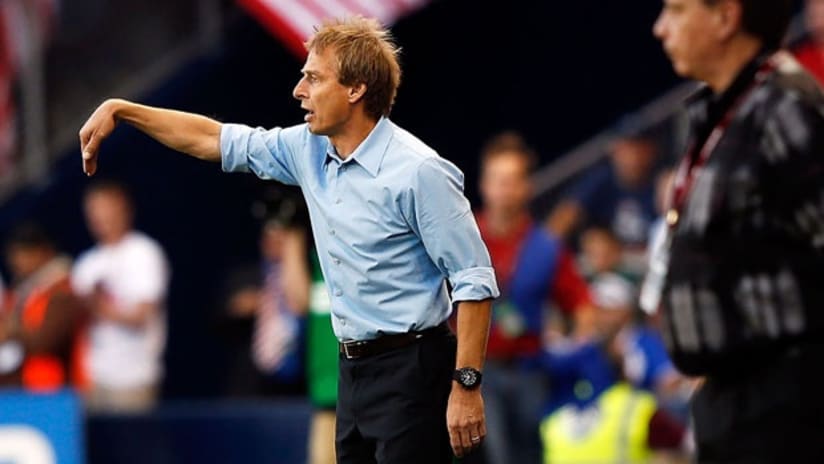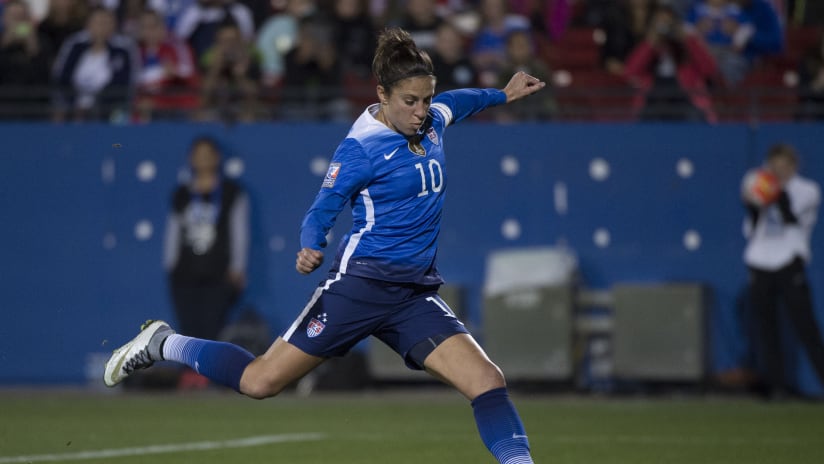CARSON, Calif. — The oxygen mask was tightly strapped, the fluctuating numbers on the treadmill display flashed brightly and, when the conveyor belt finally started its spin underneath my feet, the situation became real.
So, so real.
The VO2 max fitness test administered by the US men’s national team training staff on Wednesday afternoon at The Home Depot Center began with a slow walk before building up, minute by minute, to a frantic 10-mile-per-hour pace. Every every breath had to be carefully calculated.
It was a highly unpleasant activity that midfielder Michael Bradley has mastered, according to Masa Sakihana, head fitness coach of the USMNT.
US Soccer invited media members to experience the exact physical fitness test that the national team underwent that morning to kick off January camp. Only four brave souls gave it a go, but those that did gained a unique perspective of what it’s like for the recent camp call-ups.
READ: Klinsmann says 8-9 in camp will make roster vs. Honduras
The VO2 test (at right) was perhaps the most grueling among a series of activities that included two shuttle runs, an electronically timed 30-meter sprint and three vertical jumps. A nutritional assessment and functional movement screening, which allows the team’s training staff to evaluate injury susceptibility, were also part of the itinerary.
And though the series of fitness drills are considered to be basic for full-time athletes, each is designed to provide USMNT head coach Jurgen Klinsmann and his staff with a quick breakdown of where the camp members are physically. It’s debatable whether Klinsmann’s fitness regimen is more intense than that of previous coaches, but the assessment portion that reporters experienced has been in place for some time, according to US Soccer spokesman.
A dynamic, lower-body stretching routine kicked off the two-hour workout. My hamstrings, calves and hips had never been so awake. Next was a 5-10-5 agility cone drill that Sakihana said measures how quickly players can change direction. The drill is a series of short bursts — a sprint left for five meters, right for 10 meters and back left for another five — that tracks explosiveness, an especially important skill for strikers since they often find themselves in battles for possession and loose balls.
We moved to on to the 30-meter dash (linear speed is crucial at all positions, Sakihana said) and a series of vertical jumps (using stored energy from the lower body is important in aerial battles, perhaps most notably for senior team hopeful Omar Gonzalez). It all seemed like a breeze until we walked into the indoor training facility, where the VO2 monster waited. Wearing a mask that limits oxygen intake, no matter how awesome it looks, might now be my least favorite thing ever.
READ: "Another level" awaiting Gonzalez with USMNT, says Klinsmann
Athletic trainer Jeremy Hassler also administered a functional movement screening that all athletes are subject to at the start of camp before director of performance nutrition Danielle Lafata broke down a dietary plan designed for soccer players. We found out midfielder Kyle Beckerman is an exceptional eater.
Testing over the years has led to the creation of a thorough database, which is inundated with fitness results and provides Klinsmann a helpful overview of who he has at his disposal. The staff also has a profile of what top athletes at a certain position can and should do, leading to tailored and individualized workouts on the practice field.
There isn’t an optimal performance, Sakihana said, but testing at least allows the staff to gauge how hard a player can go, how long they can sustain it and how quickly they can recover.
But the members of this January camp might never look at a mask the same again.




